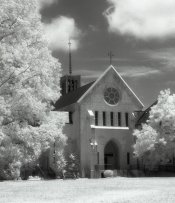Cor
Member
Maris,
thanks for a nice write up! It mimics my experiences, I was a beta tester once for MACO when they sold EFKE AURA under their brand name. I could not get any significant halo effect out of it, I tried placing aluminum foil behind the film, white paper, and even bought a 4*5 glass plate holder to place a glass plate behind the film..nothing really helped except gross over exposure but that has problems too as you noted.
I am a bit surprised that people mention lack of contrast, I seem to obtain plenty of contrast, sometimes too much. I always soup in PyrocatHD, in my work I find the heavy stained highlights a bonus since they will print softer on VC paper.
I do not have serious problems with focus shift, but I tend to shoot around f22, mostly 90-150 mm on 4*5. I do not approach reciproke failure as careful as you did (i do take it in account, but in a vague manner) , thanks!
Best,
Cor
thanks for a nice write up! It mimics my experiences, I was a beta tester once for MACO when they sold EFKE AURA under their brand name. I could not get any significant halo effect out of it, I tried placing aluminum foil behind the film, white paper, and even bought a 4*5 glass plate holder to place a glass plate behind the film..nothing really helped except gross over exposure but that has problems too as you noted.
I am a bit surprised that people mention lack of contrast, I seem to obtain plenty of contrast, sometimes too much. I always soup in PyrocatHD, in my work I find the heavy stained highlights a bonus since they will print softer on VC paper.
I do not have serious problems with focus shift, but I tend to shoot around f22, mostly 90-150 mm on 4*5. I do not approach reciproke failure as careful as you did (i do take it in account, but in a vague manner) , thanks!
Best,
Cor
Here's a synopsis of a recent shoot involving several hundred frames of Efke IR 820 and Efke IR 820 Aura in 4x5 and 120 roll film formats.
The "Aura" feature does not do much on big film as the image "halation" or "flare" is quite small. I imagine in the 35mm format where the enlargement ratios are greater the "Aura" would be more prominent. Bunches of green leaves which "glow" in the infrared tend to merge into fuzzy blobs with significant over exposure. This effect is worse with the Aura version of Efke IR 820.
There is a loose correlation between conventional meter readings and infrared exposures. My Pentax spot meter was set at EI=1.5 for sunlit scenes, EI=0.75 for sunny day subjects where shadow detail was important, EI=0.3 for cloudy overcast days. Exposures were through IR680 and IR720 filters. Surprisingly it did not matter which filter was used. The results looked much the same!
The IR680 and IR720 filters, 77mm diameter, came from China via Ebay. They cost about $20 each. It is possible, for me at least, to see through these filters and preview the infrared effect. The filter has to be held close to the eye, extraneous light carefully excluded, and the eye "dark-adapted" for about 30 seconds. I suspect that with the iris of the eye wide open looking at the sun through an IR transmitting filter would be a very bad thing indeed.
Efke IR 820 film shows significant reciprocity failure but the following corrections worked well:
1 second metered, give1.5 seconds
2 seconds metered, give 3.5 seconds
4 seconds metered, give 8 seconds
8 seconds metered, give 24 seconds
15 seconds metered, give 1 minute
30 seconds metered, give 3 minutes
more then 30 secs, give up.
Infrared focus shift is real and horrible. Everything I shot with the 360mm lens on my Mamiya RB 67 is out of focus. I suspect I have to rack this lens out about 5mm to compensate the difference between the visible and IR focii. More exact measurements are planned. Wide angle lenses well stopped down yielded sharp images but only because increased depth of focus forgives imprecision.
Some development variations were tried including hot paper strength Dektol! This was supposed to cure the reputation IR negatives have for low contrast. Cure indeed! The resulting super-contrasty negatives still made acceptable (sort of) pictures on grade#0 and grade#1 paper. Optimum development for my film turned out to be 7 minutes at 20 Celcius in straight Xtol. YMMV, naturally.
In practice Efke IR 820 like other IR films I have tried both disappoints and exhilarates. A lot of subject matter I had high hopes for yielded unremarkable schmutz but some plain things turned to visual magic. That's the deal.








 The filters I was able to find at what I was willing to spend were 720 and 760 nm, so that's what I bought. The #87 stuff might be OK with the EFKE film, but I think its too deep for the Rollei, especially the 87C. I'm not positive, but I think the 720 nm filters are targeted at folks playing with their bit zappers.
The filters I was able to find at what I was willing to spend were 720 and 760 nm, so that's what I bought. The #87 stuff might be OK with the EFKE film, but I think its too deep for the Rollei, especially the 87C. I'm not positive, but I think the 720 nm filters are targeted at folks playing with their bit zappers.



